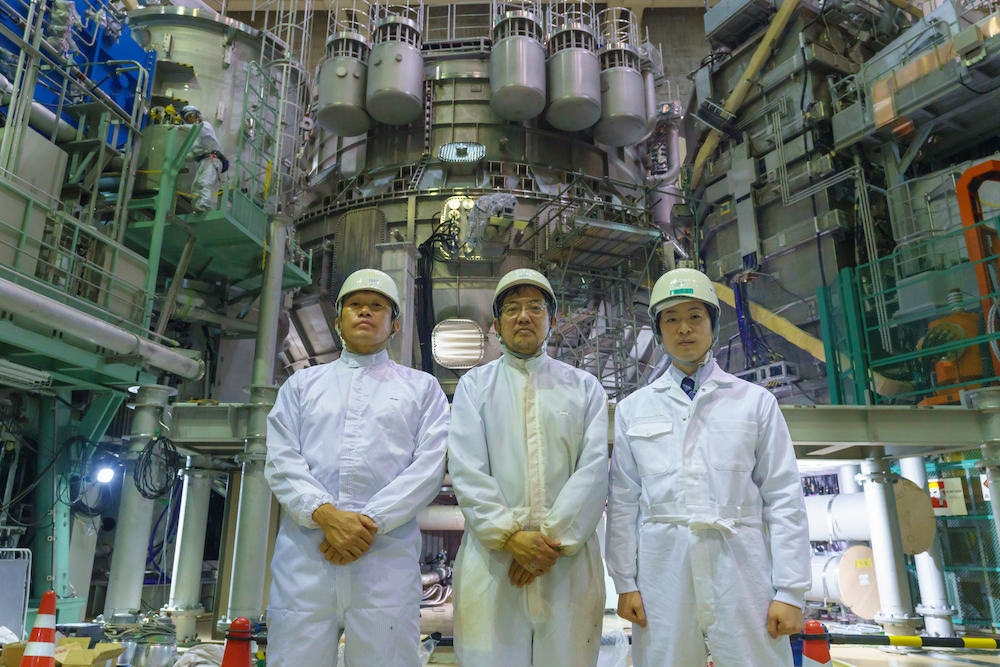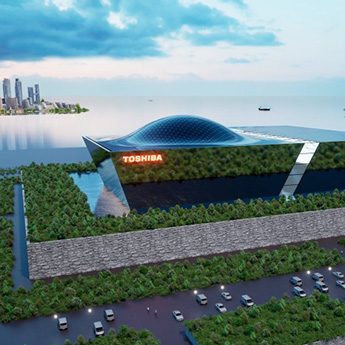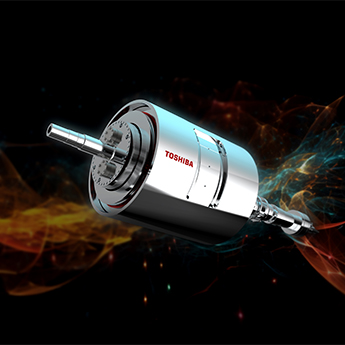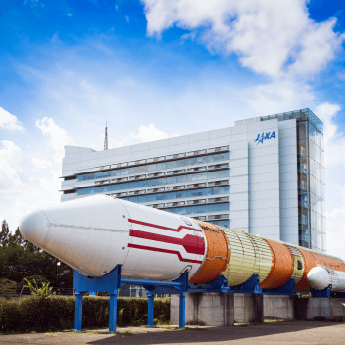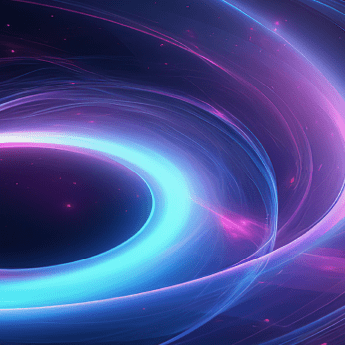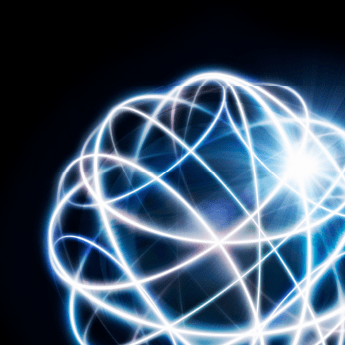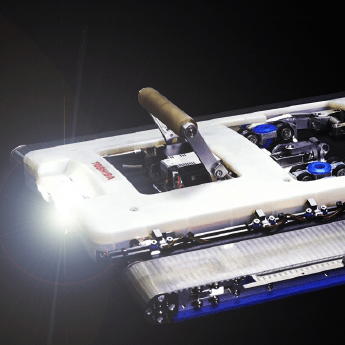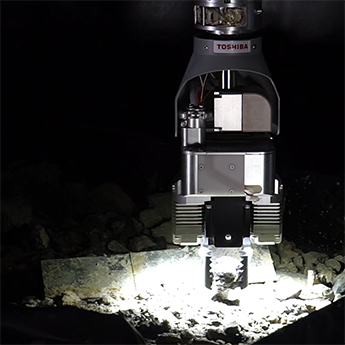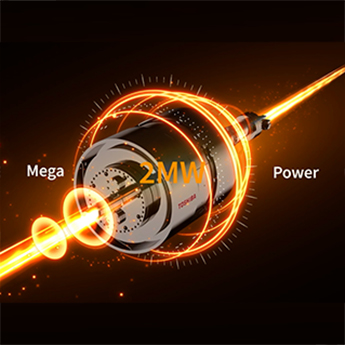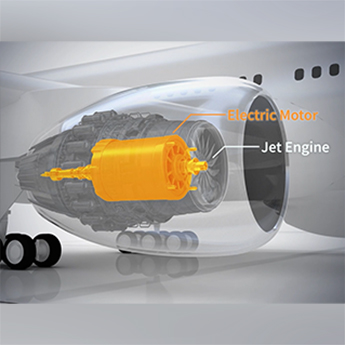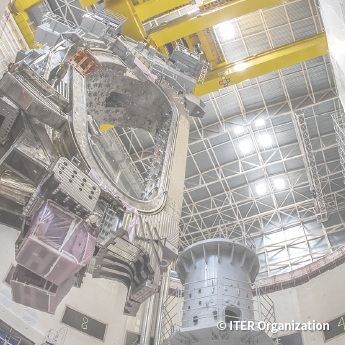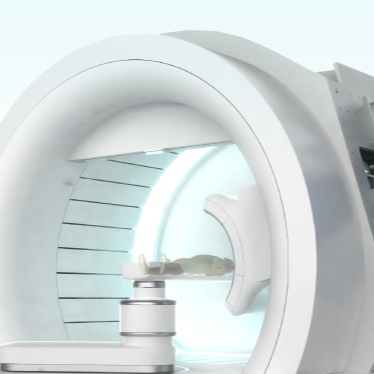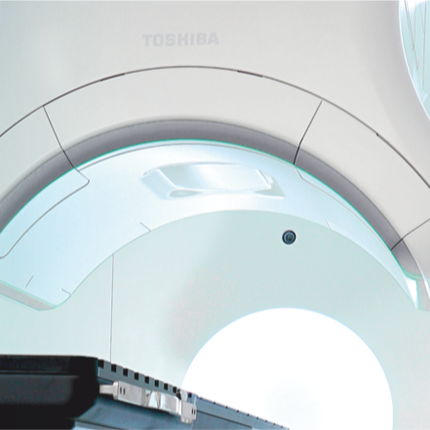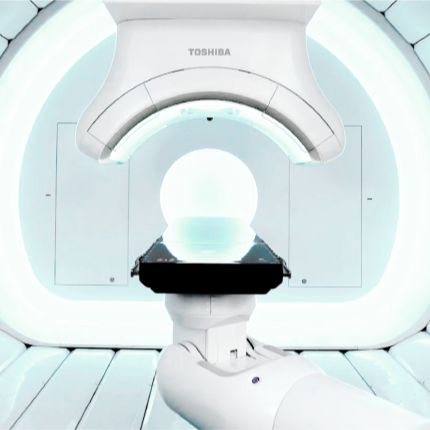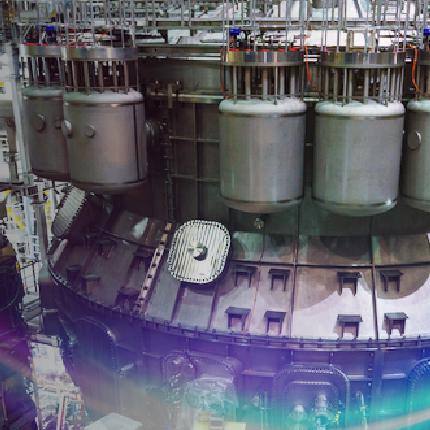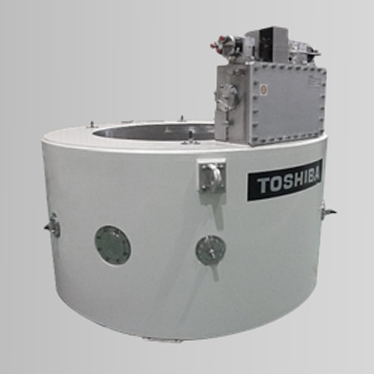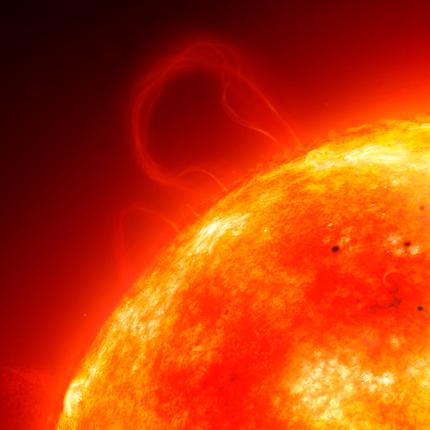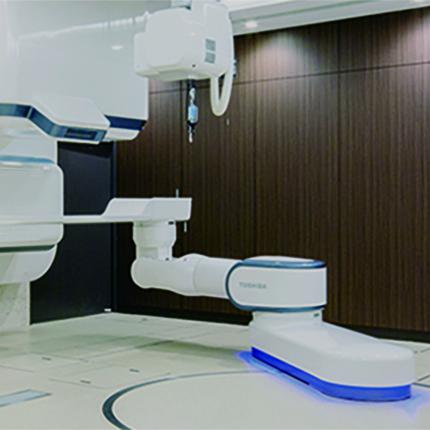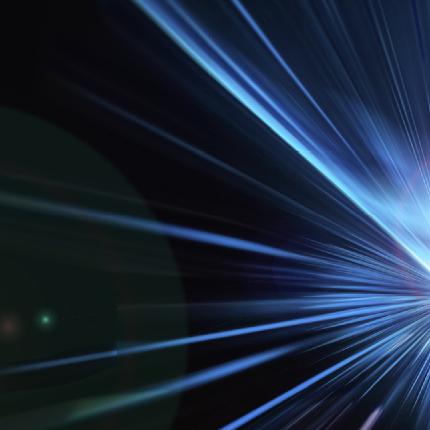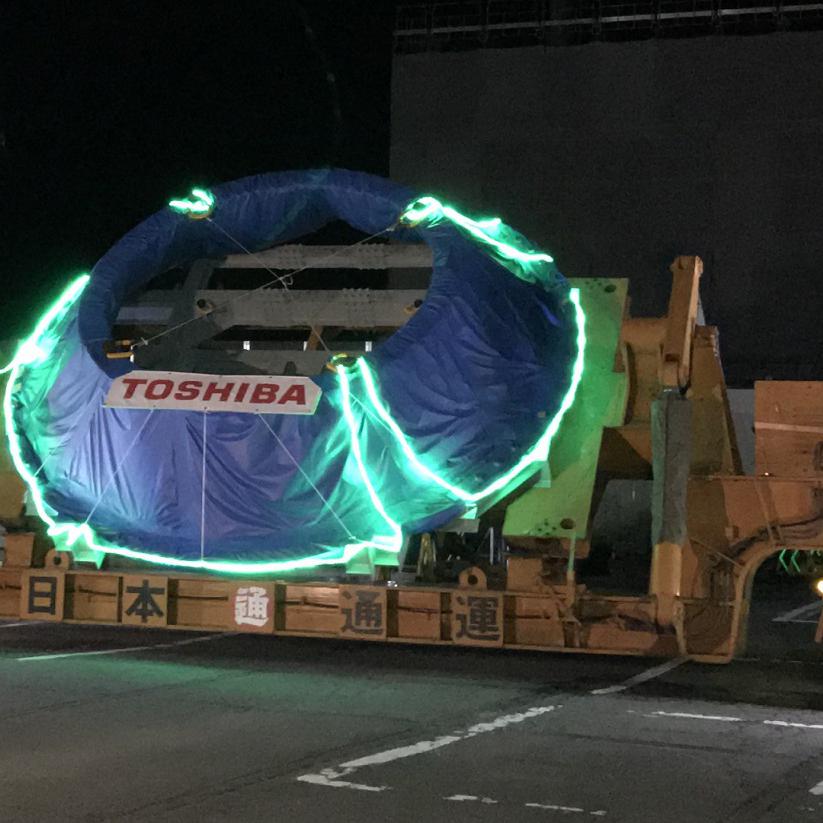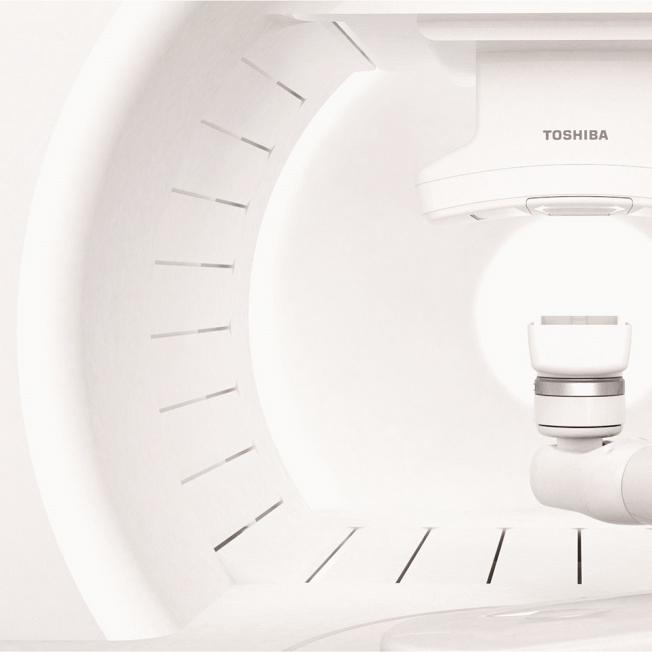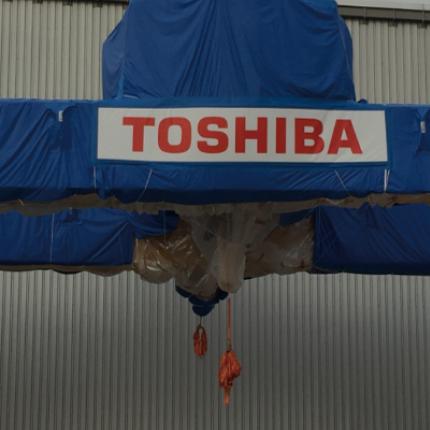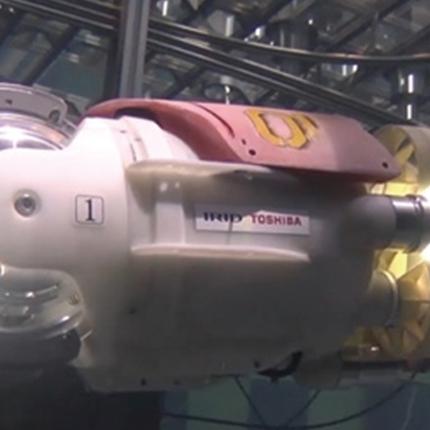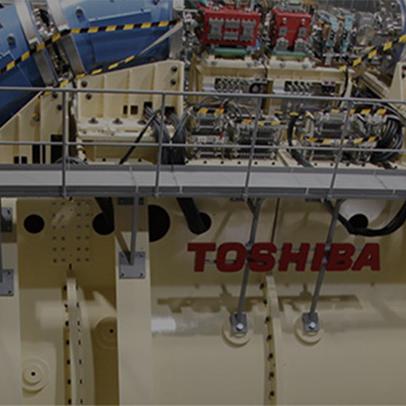A Fusion of the future- meeting the challenge of ever increasing demand for energy whilst reducing CO2 emissions - (part 1 of 2)
At the G20 Riyadh summit in November 2020, Japan’s Prime Minister - Yoshihide Suga, reaffirmed the country’s commitment to zero greenhouse gas emissions by 2050. Since then, energy and resource shortages have become a major global issue. The challenge is to generate more energy yet reduce CO2 emissions to combat global warming. Fusion just may be the solution that humankind has been waiting for.
Nuclear fission—what nuclear power stations do—involves splitting a heavy atomic nucleus. Fusion is the opposite process—in other words, joining light atomic nuclei together. Unlike Nuclear fission, fusion does not generate high-level radioactive waste. It is also safer than fission because the fusion reaction can be stopped any time, so there is no danger of a runaway reaction that can occur with nuclear fission. Fusion generates massive amounts of energy, just like the internal reactions that take place inside the sun, but without the CO2 emissions of a conventional thermal power station. For all of these reasons, fusion is increasingly viewed as the ultimate energy solution for our times. The whole world is conducting research on fusion, particularly Japan, Europe, America and Russia. And the biggest research project of them all is the International Thermonuclear Experimental Reactor (ITER), which includes the JT-60SA superconducting fusion experiment led by Japan.
ITER is possibly the largest experiment ever conducted in human history. A key part of it is the JT-60SA, which will be used for a series of groundbreaking experiments on high-pressure plasma* control technology. This will lead to feasibility testing of the demonstration reactor, followed by development of a commercial reactor. Full-scale testing with the JT-60SA will give us important insights into plasma ignition.
* The fourth physical state of matter (after solid, liquid and gas). Fusion generates plasma at more than 100 million degrees Celsius.
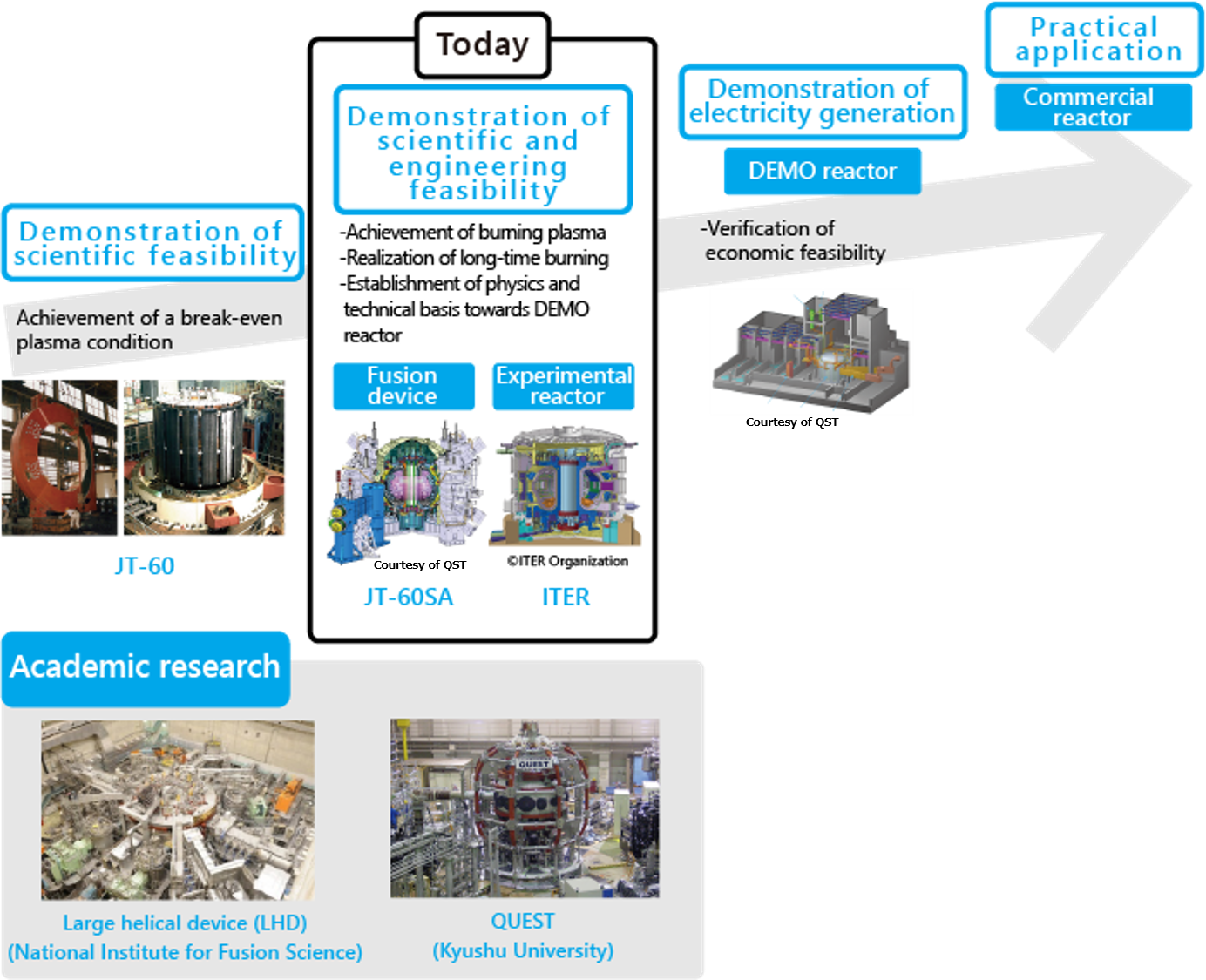
How the JT-60SA is helping to build a mini-sun here on earth
The Naka Fusion Institute is located in the unprepossessing town of Naka city in Ibaraki prefecture. In a corner of the facility is an enormous apparatus rising some 16 meters into the air and holding in its center a donut-shaped vacuum vessel. This is the JT-60SA,fusion experimental reactor jointly built between Japan and Europe.
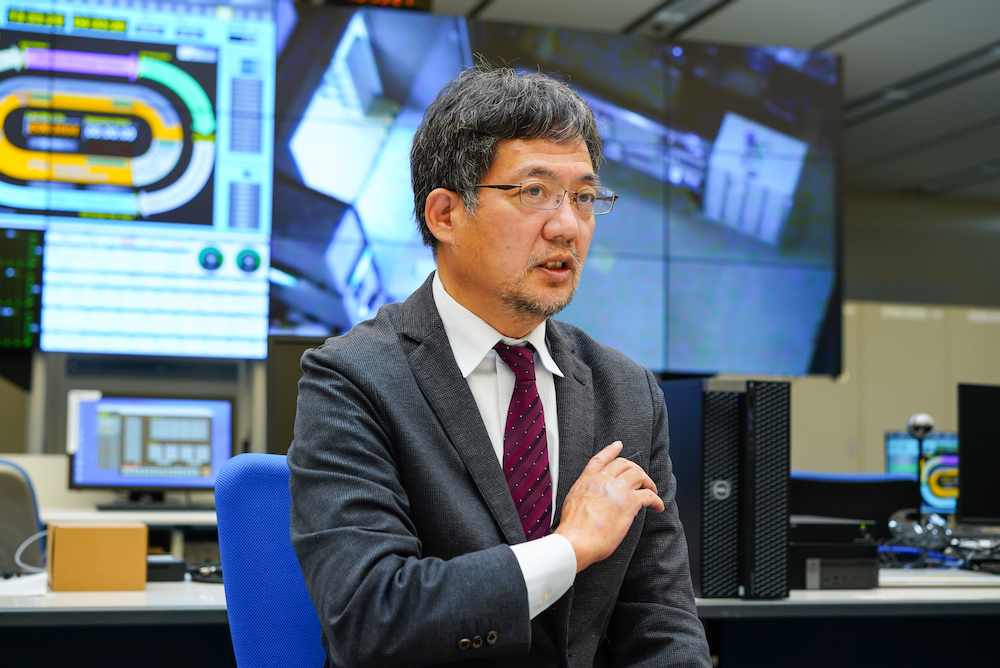
National Institutes for Quantum and Radiological Science and Technology (QST)
According to Masaya Hanada, deputy director at the Naka Fusion Institute, in the National Institutes for Quantum and Radiological Science and Technology (QST), construction of the JT-60SA and ITER is a critical step in the quest for fusion power. “It’s probably no exaggeration to say that if we don’t succeed with JT-60SA and ITER then the dream of fusion power is doomed. Which is why the researchers all understand the importance of what they’re doing. There’s a lot of expectation around the JT-60SA, working in parallel with ITER. If we can get both the JT-60SA and ITER up and running soon, that will give us an enormous boost in working towards the next step of the demonstration and commercial reactors. So we need to start testing as soon as possible, get the results out there, show the world that this technology really works. The JT-60SA is such an important project, and that’s what drives us day to day.”
Hanada says the JT-60SA has three key objectives: support the work of ITER; conduct additional research on a demonstration reactor; and provide training for emerging researchers and engineers.
“The ITER uses heavy hydrogen (deuterium) and tritium as fuel. But JT-60SA testing only uses light hydrogen and heavy hydrogen. Since we don’t use radioactive material we aren’t subject to as much regulation, which means we can have a more flexible testing regime. Our research is generating lots of important data for ITER. We are also developing a long-term stabilization system for high-pressure plasma, that will lead to more compact designs. It should also help to reduce development costs when we move onto building the demonstration reactor.
“We are also trying to position ourselves as a fusion research and training facility well into the future. As the largest fusion testing facility in the world, we attract researchers from Japan and Europe. Ideally we’d like to set up a sort of expertise and experience cycle, where they gain valuable skills with us here at Naka, then go over to Europe and work on the ITER program, and finally come back again with new insights from their time with ITER. We believe that we’re perfectly positioned to do that.”
Ultra-precision design — accurate to just a few millimeters per 10 meters
Construction of the JT-60SA began in 2007. Work on the first reactor vessel began in October 2008; the assembly part of the process began in 2013 and was finally completed in March 2020. Toshiba project leader Keiichi Sagawa and Yusuke Shibama from QST, who was involved from the initial design stage, describe some of the hurdles and challenges they encountered along the way.
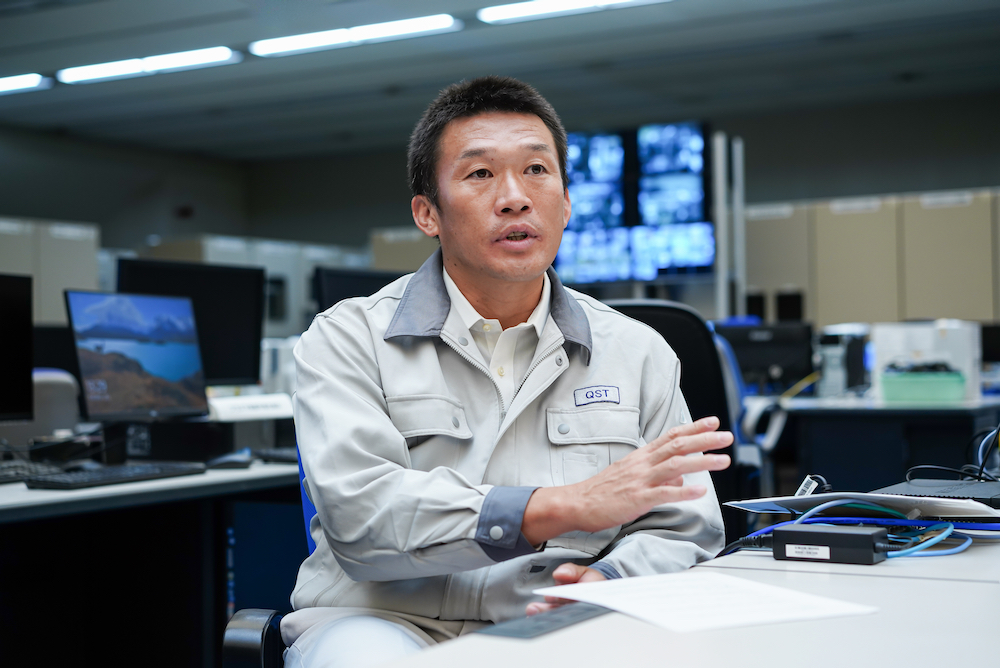
Division of Tokamak System Technology,
Naka Fusion Institute, National Institutes for Quantum and Radiological Science and Technology
“The cryostat base was made in Spain, while the toroidal field (TF) coils that generate the magnetic field to hold the plasma were made in Italy and France,” recalls Shibama. “And we had to put them all together here in Japan. Even though we’d drawn up very precise manufacturing specifications, you find that different countries have different ways of going about things. We noticed some small but significant dimensional discrepancies between Europe and Japan. Having said that, when you’re talking tolerances of just a few millimeters, you’re always going to come across technical challenges from time to time. And the JT-60SA certainly gave us a few of those!”
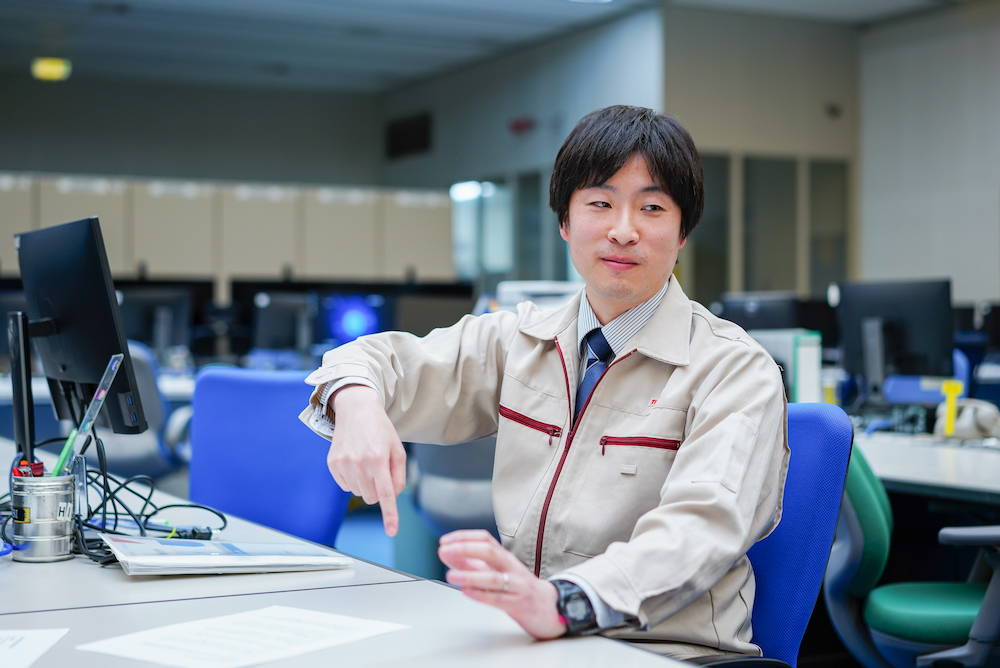
Toshiba Energy Systems & Solutions Corporation
“It was an ongoing series of challenges right from the design stage,” remembers Sagawa. “We’d have endless discussions with Europe to thrash out the finer details of every process and procedure. We were using different suppliers for manufacturing and assembly processes, which caused a great many difficulties. But we got there in the end. And it really underlined the critical importance of communication on an international project like this. We spent a lot of time talking with the European researchers and engineers about solutions to specific issues. We even flew over a few times to inspect the assembly mock-up on site, so that we could have a reference point for what we needed to do back in Japan.”
Shibama and Sagawa agree that every job has its technical challenges, but they nominate two processes in particular: positioning the center solenoid (which generates electric current and magnetic field) in the longitudinal direction relative to the donut hole at the center of the assembly; and assembling the donut ring of toroidal field coils.
At two meters across and 6.4 meters high and weighing in at 100 tons, the center solenoid in the JT-60SA is the largest coil assembly in the world. The massive center solenoid had to be suspended from above through an opening with clearance of just 20 mm, then carefully positioned to an accuracy of ±2 mm. You can imagine what an undertaking that was! Not only that, the coils were fabricated in multiple locations including Italy and France, and had slightly different dimensions when positioned vertically compared to flat on the ground. That’s because of the unique D shape of the coil. The challenge was to mount 18 different coils carefully in position, all the while monitoring for minute changes in dimensions.
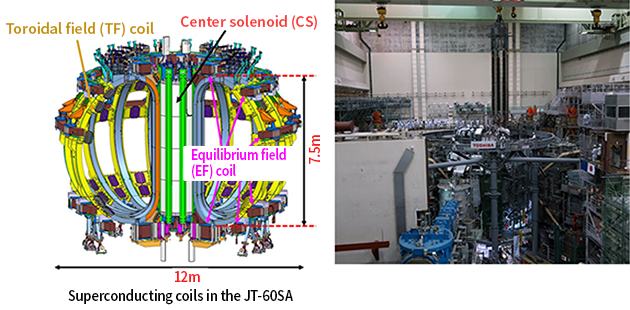
Photo courtesy of QST
The JT-60SA soars some 16 meters into the air yet is designed to an accuracy of just millimeters. What other scientific marvels does this cutting-edge feat of high-precision environment have in store for us? What other technical challenges were there for Toshiba and the QST? In the second installment,「A Fusion of the future– meeting the challenge of ever increasing demand for energy whilst reducing CO2 emissions (Part 2 of 2) 」, we take a closer look at the advanced technology and amazing technicians who put it all together.
